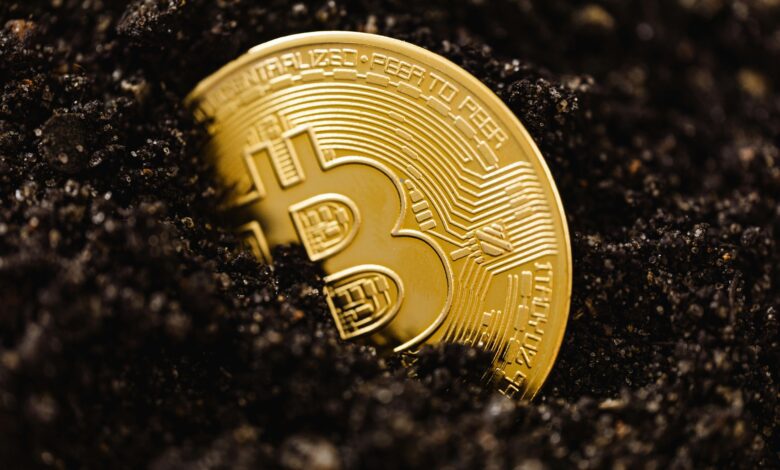Gold Investment Demystified: A Comprehensive Guide to ETFs, Physical Gold, and Mining Stocks

In an ever-evolving financial landscape, gold has remained a timeless asset, often viewed as a safe haven during periods of economic uncertainty. Its allure lies not only in its historical significance as a store of value but also in its potential to diversify an investment portfolio. However, with various options available—ranging from exchange-traded funds (ETFs) and physical gold to mining stocks—investors may find themselves grappling with the question: which method is best suited for their financial goals? This article aims to demystify the gold investment landscape by exploring the distinct avenues available, weighing the pros and cons of each option, and providing strategic considerations to help you determine the most effective way to integrate gold into your investment strategy. Whether you're a seasoned investor or just starting to explore the world of precious metals, understanding these facets of gold investment can empower you to make informed decisions that align with your financial aspirations.
- 1. "Understanding Your Options: ETFs, Physical Gold, and Mining Stocks"
- 2. "Pros and Cons: Weighing the Benefits of Each Gold Investment Method"
- 3. "Strategic Considerations: How to Choose the Right Gold Investment for Your Portfolio"
1. "Understanding Your Options: ETFs, Physical Gold, and Mining Stocks"
When it comes to investing in gold, it's essential to understand the various options available to you, each with its own set of advantages and risks. The three primary avenues for investing in gold are Exchange-Traded Funds (ETFs), physical gold, and mining stocks.
ETFs are investment funds that are traded on stock exchanges, similar to individual stocks. Gold ETFs typically invest in physical gold or gold futures, allowing investors to gain exposure to gold prices without the need to purchase and store the physical metal. One of the key benefits of gold ETFs is their liquidity; they can be bought and sold throughout the trading day at market prices, making them a convenient choice for many investors. Additionally, they often carry lower transaction costs compared to buying physical gold.
On the other hand, investing in physical gold involves purchasing actual gold bullion, coins, or jewelry. This option appeals to those who prefer tangibility and a sense of security in holding a physical asset. While physical gold can serve as a hedge against inflation and economic uncertainty, it also comes with challenges, such as storage costs, insurance, and the potential for theft. Furthermore, selling physical gold can be less straightforward than liquidating an ETF, as it often requires finding a buyer willing to pay a fair price.
Mining stocks represent another way to invest in gold. By purchasing shares in companies that mine for gold, investors can potentially benefit from both the rising price of gold and the operational success of these companies. Mining stocks can offer higher potential returns than physical gold or ETFs, as they can increase in value significantly during bullish gold markets. However, they also come with additional risks, such as operational challenges, geopolitical factors, and fluctuating production costs, which can impact a mining company's profitability independent of gold prices.
Understanding these options allows investors to tailor their gold investment strategy to their individual financial goals, risk tolerance, and market outlook. Whether you choose ETFs for their liquidity, physical gold for its tangibility, or mining stocks for their growth potential, each option plays a unique role in a diversified investment portfolio.
2. "Pros and Cons: Weighing the Benefits of Each Gold Investment Method"
When considering how to invest in gold, it's essential to weigh the pros and cons of each method: ETFs, physical gold, and mining stocks. Each approach offers distinct advantages and disadvantages that cater to different investment strategies, risk tolerances, and personal preferences.
Gold ETFs (Exchange-Traded Funds) provide a convenient way to invest in gold without the challenges associated with storing physical assets. One of their primary benefits is liquidity; investors can buy and sell shares throughout the trading day, making it easy to enter or exit positions. Additionally, gold ETFs typically have lower management fees compared to mutual funds, and they offer diversification, as many funds hold a range of gold-related assets. However, one drawback is that investors do not own the physical gold; their investment is tied to the performance of the fund, which may not mirror the price of gold perfectly. Furthermore, there may be management fees that could erode returns over time.
On the other hand, physical gold appeals to those who prefer tangible assets. Owning physical gold, such as coins or bars, can provide a sense of security, especially in times of economic uncertainty. It can also serve as a hedge against inflation and currency devaluation. However, physical gold comes with storage and insurance costs, and it can be less liquid than ETFs. Selling physical gold may require finding a buyer or dealing with dealers, which can involve additional time and costs. Additionally, the price of physical gold may include premiums over the spot price, depending on the form and seller.
Mining stocks present another avenue for investing in gold, often offering the potential for higher returns due to leverage in gold prices. As gold prices rise, well-managed mining companies can significantly increase their profits, making these stocks attractive for growth-oriented investors. Mining stocks can also provide dividends, adding an income component that physical gold and ETFs do not offer. However, they come with their own set of risks, including operational challenges, fluctuating production costs, and the inherent volatility of stock prices. The performance of mining stocks is not solely tied to gold prices; it can also be affected by broader market trends and company-specific factors, making them a more complex investment choice.
In summary, each gold investment method has its unique set of pros and cons. Gold ETFs offer liquidity and diversification but lack physical ownership. Physical gold provides a tangible asset but incurs storage costs and lower liquidity. Mining stocks can deliver growth potential and dividends but carry additional risks and volatility. Investors should assess their goals, risk tolerance, and investment horizon to determine which method aligns best with their financial strategy.
3. "Strategic Considerations: How to Choose the Right Gold Investment for Your Portfolio"
When it comes to investing in gold, strategic considerations play a crucial role in determining the most suitable option for your portfolio. Each method of gold investment—be it ETFs, physical gold, or mining stocks—carries distinct advantages and risks that align differently with individual financial goals, risk tolerance, and market outlook.
First, consider your investment objectives. If you are seeking a hedge against inflation or economic instability, physical gold may be the best choice. It has intrinsic value and is a tangible asset that can provide a sense of security during market downturns. However, it also requires storage and insurance, which can add to the overall cost. On the other hand, if you are focused on liquidity and ease of trading, gold ETFs (exchange-traded funds) offer a convenient way to gain exposure to gold prices without the complexities of physical ownership. They can be bought and sold like stocks, making them an attractive option for active traders.
Second, evaluate your risk tolerance. Investing in mining stocks can offer the potential for higher returns, especially during bullish market conditions for gold. However, these stocks also carry higher volatility and are subject to additional risks, such as operational issues and fluctuating production costs. If you prefer a more conservative approach, gold ETFs or physical gold may be preferable, as they are generally less susceptible to the whims of the stock market.
Lastly, consider the overall composition of your investment portfolio. Diversification is key to managing risk, so it may be wise to allocate a portion of your investments across different types of gold assets. For instance, combining physical gold with gold ETFs and a few carefully selected mining stocks can provide a balanced exposure, allowing you to benefit from both the stability of tangible assets and the growth potential of the mining sector.
Ultimately, the decision on how to invest in gold should be guided by your personal financial situation, investment timeline, and market outlook. By carefully assessing these strategic considerations, you can make informed choices that align with your investment goals and help fortify your portfolio against uncertainty.
In conclusion, investing in gold offers a range of options, each with its own unique advantages and challenges. Whether you choose ETFs for their liquidity and ease of management, physical gold for its tangibility and historical value, or mining stocks for their potential growth and dividends, it’s crucial to align your investment strategy with your financial goals, risk tolerance, and market outlook. By understanding the distinct characteristics of each investment method and carefully weighing their pros and cons, you can make informed decisions that enhance your portfolio's resilience against market volatility. As with any investment, thorough research and a well-defined strategy will be key to navigating the complexities of gold investing. Ultimately, gold can serve as a valuable asset in your overall investment strategy, providing not only a hedge against inflation but also the opportunity for growth in an ever-changing economic landscape.





